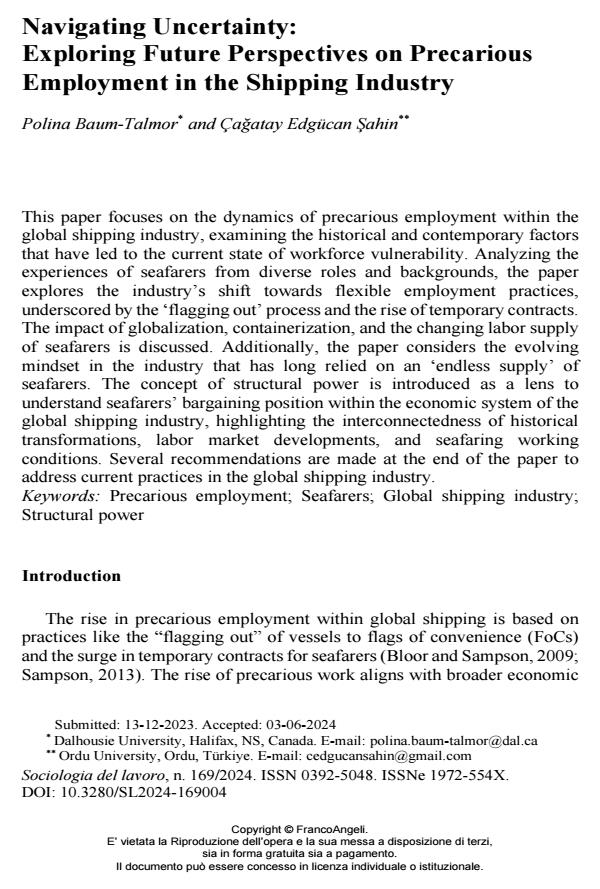Navigating Uncertainty: Exploring Future Perspectives on Precarious Employment in the Shipping Industry
Journal title SOCIOLOGIA DEL LAVORO
Author/s Polina Baum-Talmor, Cagatay Edgücan Sahin
Publishing Year 2024 Issue 2024/169
Language English Pages 26 P. 73-98 File size 249 KB
DOI 10.3280/SL2024-169004
DOI is like a bar code for intellectual property: to have more infomation
click here
Below, you can see the article first page
If you want to buy this article in PDF format, you can do it, following the instructions to buy download credits

FrancoAngeli is member of Publishers International Linking Association, Inc (PILA), a not-for-profit association which run the CrossRef service enabling links to and from online scholarly content.
Questo articolo si concentra sulle dinamiche dell’occupazione precaria all’interno dell’industria marittima globale, esaminando i fattori storici e contemporanei che hanno portato allo stato attuale di vulnerabilità della forza lavoro. Analizzando le esperienze dei marinai provenienti da ruoli e contesti diversi, l’articolo esplora lo spostamento dell’industria verso pratiche di impiego flessibili, accentuato dalla strategia del “flagging out” e dall’aumento dei contratti temporanei. Viene discusso l’impatto della globalizzazione, della containerizzazione e del cambiamento dell’offerta di lavoro dei marinai, sottolineando la natura precaria della loro occupazione. Inoltre, l’articolo esamina l’evoluzione del pensiero all’interno dell’industria che per lungo tempo ha fatto affidamento su una “fornitura infinita” di marinai. Viene introdotto il concetto di potere strutturale come strumento per comprendere la posizione contrattuale dei marinai all’interno del sistema economico dell’industria marittima. Alla fine dell’articolo vengono avanzate diverse raccomandazioni per affrontare le pratiche attuali nell’industria marittima globale.
Keywords: Precarious employment; Seafarers; Global shipping industry; Structural power
Polina Baum-Talmor, Cagatay Edgücan Sahin, Navigating Uncertainty: Exploring Future Perspectives on Precarious Employment in the Shipping Industry in "SOCIOLOGIA DEL LAVORO " 169/2024, pp 73-98, DOI: 10.3280/SL2024-169004